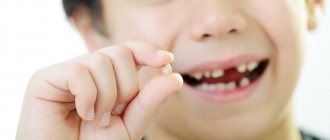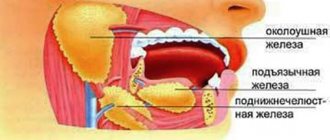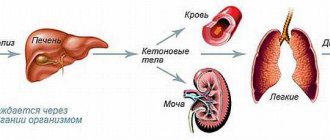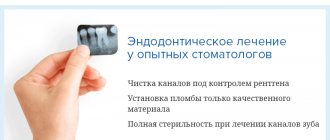Cough is a protective reaction of the immune system to the entry of various allergens and pathogens into the body. It is not always a sign of any disease, especially in early childhood. In order to understand whether cough treatment in newborns and infants is required or whether lifestyle adjustments are simply necessary, you need to understand the likely causes of the condition.
Specialists from the SM-Doctor clinic will tell you what to do if a baby has a dry or wet cough, when to urgently call a doctor, and what home measures you can take to help your child without harming his health.
Causes of cough in children of the first years of life
The most likely culprits of cough in children are ARVI - acute respiratory viral infections (influenza, adenovirus, etc.). They affect the upper or lower respiratory tract, causing mucus production. The body, trying to get rid of mucus, launches a defense mechanism in the form of coughing.
Other likely causes may be allergic reactions, primary bacterial infections, such as whooping cough, tuberculosis, or secondary bacterial complications of ARVI, such as pneumonia, bronchitis, bronchiolitis.
The culprits of dry and wet cough in an infant are sometimes:
- too dry and warm air in the room where the baby is;
- dust;
- strong, overpowering odors, such as laundry detergent or fabric softener, air freshener, perfume, scented candles and oils;
- posterior rhinitis is a disease in which mucus drains down the back wall of the throat, causing a reflex cough, especially when lying down;
- increased salivation;
- regurgitation;
- general or local hypothermia of the body.
In some cases, a persistent cough may indicate pathologies of the cardiovascular system, reflux disease, and foreign matter entering the respiratory tract.
How long does the cough last?
To assess the clinical development of the disease, it is important to determine the nature of the cough. It can be acute, protracted and chronic. A cough is considered acute if it has been present for less than three weeks. Such a cough, as a rule, accompanies the development of acute respiratory diseases and serves to clear the airways of phlegm. Acute cough is usually persistent; that is, while a person is sick, he coughs, and a decrease in the severity of attacks and the cessation of coughing indicates recovery. If the cough returns again after some time, then we are talking about a lingering cough. A cough that lasts from 3 weeks to 3 months is considered to be protracted. Such a cough (a month or longer) means that the disease causing it develops slowly and tends to become chronic. If a cough does not leave a person for more than 3 months, it is classified as chronic. With chronic cough, periods of exacerbation alternate with periods of remission (when there is no cough). Chronic cough is also characterized by fixation - the occurrence of a cough at a certain time of day. Chronic cough is an alarming symptom because it is usually a sign of serious illness. A constant cough loses its useful function and may itself be the cause of the development of certain pathologies.
When you urgently need a doctor
In the vast majority of cases, infants encounter viral infections that do not require specific treatment and go away on their own with symptomatic care.
You should be wary and seek advice from a pediatrician if your child has:
- signs of respiratory failure: shortness of breath, rapid, shallow breathing, pale skin;
- the appearance of blood in the sputum;
- clearly visible wheezing when breathing;
- paroxysmal cough, when the baby does not have time to catch his breath between shocks, turns blue, and experiences a lack of air;
- combination of cough with high fever, rash, swollen lymph nodes;
- weakness, lethargy, refusal to eat and drink, lack of response to your name, loud noises and favorite toys.
A condition that experts call false croup or stenosing laryngotracheitis deserves special attention. This is an acute viral respiratory disease that can lead to respiratory arrest in young children. Its main symptoms are:
- barking, croaking cough;
- hoarseness of voice;
- night coughing attacks.
In some cases, this condition develops swelling of the larynx, which is why the child cannot clear his throat fully and begins to choke. At the first signs of false croup, you need to call an ambulance as quickly as possible or take the baby yourself to the emergency room of the nearest hospital.
How to treat a dry cough in a child
Most often, a persistent cough in children is caused by colds. There is nothing terrible about them, and if you act correctly, the disease goes away within about a week. But a child with a cold does not feel well, and any mother wants to do everything possible to alleviate his condition and prevent the development of complications. Here are some simple tips on how to cure a child's dry cough.
1. Give plenty of fluids
Warm, generous drinks are a simple, well-known and very effective remedy. The liquid thins mucus and allows the body to remove bacteria from both the bronchi and the nasal cavity. In addition, warm drinks soothe a sore throat. What is best to give a child for a dry cough? The ideal option is simple clean water. Homemade fruit drinks diluted with half and half water (so as not to be too sweet) and fruit juices are also good.
2. Humidify the air
Dry air during the heating season can itself cause dry mucous membranes and cough. Therefore, it is advisable to have a humidifier at home. Other possible measures are placing wet towels on the radiators and wet cleaning without the use of chemicals. You can sit with your child for half an hour in the bathroom with hot steam. Daily long bathing (of course, not during illness) can serve as a good preventative against drying out the mucous membranes and possible coughing.
3. Try honey
Honey contains antibacterial substances and components that act as antioxidants. It is important to remember that honey is a highly allergenic product, so children from one to five years old should be given no more than half a teaspoon of honey daily.
4. Take Doctor MOM® syrup
When a child has a dry cough, doctors often recommend syrups and tinctures, especially those based on medicinal herbs. They facilitate expectoration and speed up the clearing of the bronchi. Doctor MOM® syrup thins sticky mucus, improves its separation and relieves inflammation. The medicine contains exclusively herbal ingredients, including extracts of aloe, basil, medicinal ginger, turmeric and licorice. This allows you to take it for a long time - up to two to three weeks - with minimal risk of side effects. Children's expectorant syrup is prescribed for laryngitis, bronchitis, tracheitis, pharyngitis and laryngotracheitis, as it has bronchodilator, mucolytic, expectorant and anti-inflammatory effects. The syrup is indicated for children from three years of age.
5. Do not take medications on your own or without a doctor’s recommendation that suppress the cough reflex and do not help remove phlegm.
It is very difficult to watch how a child suffers and suffocates from a dry night cough. Therefore, the desire to give him a medicine that stops this unpleasant syndrome is understandable and natural. However, in no case should you do this on your own! Drugs that suppress the cough reflex, without promoting the removal of sputum, can only be prescribed by a doctor and in a number of special cases: when coughing after whooping cough, pleurisy (inflammation of the pleura - the outer lining of the lungs) or caused by external factors. A qualified specialist, having studied the history, examination and diagnosis, can determine how to treat a dry barking cough in a child. Self-medication with drugs that suppress the cough reflex and do not help remove phlegm is dangerous!
6. Massage and physical therapy
Whether it be physiotherapy from a district clinic or a careful massage from a specialist with a medical education, the result should be the same - activation of metabolic processes, as a result of which sputum begins to be more easily separated and removed from the body. You can also do special breathing exercises under the supervision of an instructor.
IMPORTANT!
In addition to colds, the cause of cough can be asthma, allergies, diseases of the central nervous system, chemical poisoning, so before starting treatment, the child should be shown to a pediatrician. Only a doctor can make a diagnosis and prescribe treatment, which includes taking medications.
A prolonged dry cough that does not bring relief may be complicated by:
- spontaneous emphysema of the mediastinum;
- viral pneumonia;
- chronic bronchitis;
- pneumothorax;
- anxious sleep, insomnia;
- disturbance of psycho-emotional balance in a child.
It is necessary to treat dry cough in children on time and with proven means, preferably as natural and safe as possible. Seek help immediately if you notice streaks of blood in the sputum - this may indicate the development of internal bleeding. You should also be alert to such signs as a very high temperature that persists for several days or more, the presence of wheezing when breathing, a “barking” cough, severe diarrhea syndrome, and a dry cough that appears in the child before vomiting.
Diagnostics
At the appointment, the pediatrician carefully examines the baby, conducts initial diagnostics and, if necessary, prescribes laboratory or instrumental tests.
In order to determine the possible cause of the cough and assess the current condition of the baby, the following is carried out:
- auscultation (listening) of the lungs;
- laboratory blood tests with a detailed leukocyte formula;
- various allergy tests if indicated;
- chest x-ray;
- ultrasound examination of the heart.
Next, the specialist, assessing the results of tests and examinations, establishes an accurate diagnosis and prescribes appropriate therapy.
What is regurgitation?
Regurgitation in infants is considered to be the spontaneous release of a small amount of just eaten food (milk or formula) into the baby’s mouth from the stomach.
Content:
1. Types of regurgitation |
00:56 (in video) 2. Physiological causes of regurgitation | 01:40 (in video) 3. Functional causes of regurgitation | 02:43 (in video) 4. Permissible frequency of regurgitation 05:13 (in video) 5. Until what age can regurgitation continue | 05:47 (in video) 6. Is it necessary to feed the baby after spitting up | 06:23 (in video) 7. Actions when spitting up | 07:11 (in video) 8. Congenital pathologies of the gastrointestinal tract, as a cause of regurgitation 9. Actions to prevent regurgitation Online consultation with a pediatrician (Breastfeeding Specialist)
Online consultation
During the consultation, you will be able to voice your problem, the doctor will clarify the situation, interpret the tests, answer your questions and give the necessary recommendations.
Treatment of cough in newborns and infants
For young children, adequate therapy should be carried out, based on objective information obtained during the examination and collection of anamnestic data. Treatment of cough in infants should only be carried out by qualified pediatric specialists: pediatricians, infectious disease specialists, allergists.
Depending on the indications, the treatment package may include:
- antipyretics;
- antibacterial drugs for confirmed bacterial infection;
- medications that thin sputum;
- antitussives that block reflex cough;
- antihistamines and hormonal drugs.
A competent doctor will also give parents individual recommendations on establishing an optimal microclimate in the child’s room, proper nutrition, and daily routine. The correct regimen for a baby is the basis for a quick recovery from any disease.
How to help infants at home with a cough
The most important rule is never to give children any medications without consulting a doctor and not to practice traditional medicine techniques, even if they were recommended by a beloved grandmother, an experienced neighbor, or a mother of five children from an online forum.
The main task of parents in the treatment of dry or wet cough is general support of the body. What does that require?
- Keep the room where the baby is at no more than 22 degrees Celsius with a humidity of at least 40%. The drier the air, the more time and effort the body needs to moisturize it. Inhaling cool, humidified air facilitates the functioning of the respiratory system, helping them quickly cope with mucus and remove it out.
- Give the baby plenty of water. The optimal drink for newborns and infants is mother's milk, but with artificial feeding or pathological fluid loss, clean water can and should be given. Liquid is necessary to maintain the rheology (fluidity) of sputum: the thinner the mucus, the easier it is for the child to cough it up.
- Periodically change the baby's position in the crib and keep him in an upright position more often. Such measures contribute to accelerated mucus discharge and improved nasal breathing.
- Walk. Walking in the fresh air is an excellent cure for coughing children. The main thing is that the baby feels satisfactory, does not have a fever and does not suffer from diseases that require strict bed rest. Cool, fresh air, entering the child’s respiratory tract on the street, condenses and moisturizes the mucus, thereby accelerating the process of mucus discharge and overall recovery. Walking is especially useful for children with whooping cough, laryngotracheitis, bronchitis and other viral or bacterial lesions of the respiratory system (in consultation with a doctor!)
- Do not force him to eat if the baby categorically refuses. During any illness, all the body’s forces are aimed at fighting the “invader,” and digestion takes time and reduces the intensity of the immune system’s attacks on the infection.
What you should definitely not do:
- give infants both antitussives and expectorants/mucolytics without a doctor’s prescription;
- experiment with methods of folk practices, even proven by the experience of the older generation;
- leave the street if the child develops a wet cough after a dry cough (this means that the air has fulfilled its task - it has moistened the sputum, and now it is easier for the baby to cough);
- wrap up, overheat the baby.
Treatment of GERD
Treatment of gastroesophageal reflux disease is aimed at improving the motility of the upper gastrointestinal tract, suppressing the acidity of gastric juice, as well as eliminating factors leading to increased intra-abdominal pressure or decreased tone of the lower esophageal sphincter.
Much attention is paid to the lifestyle and nutrition of patients. The diet of patients suffering from GERD excludes foods that irritate the mucous membrane (spicy sauces, seasonings, onions, garlic, peppers, ketchup, sour fruit juices), reduce the tone of the lower esophageal sphincter and/or slow down gastric emptying (alcohol, coffee, chocolate, cakes, pastries, fatty foods, lard, margarine), as well as products that increase gas formation, leading to an increase in intra-abdominal pressure. It is necessary to explain that overeating, as well as eating in a hurry, before bed or at night will lead to increased symptoms. Fractional meals have a positive effect. Food should be thoroughly chewed, the temperature of the food should not be very high or very low, but should be around 37–38°C. The last meal should be at least 2 hours before bedtime. The head end of the bed is raised 15 cm using stands. This helps improve esophageal clearance due to the effect of gravity on the esophagus and stomach. It is important to note that elevating only the head (for example, using a high pillow) is not allowed, as this increases intra-abdominal pressure, which aggravates reflux. Exclude physical exercise after eating, tight belts, tight clothing - all this leads to an increase in intra-abdominal pressure and contributes to the reflux of stomach contents into the esophagus.
The main groups of drugs used in the treatment of GERD are prokinetics, acid suppressants and antacids.
Prokinetics include dopamine receptor blockers - metoclopramide, domperidone and cisapride. Cisapride has now been discontinued due to the risk of cardiac arrhythmia. Metoclopramide penetrates the blood-brain barrier and blocks dopaminergic receptors in the thalamus, hypothalamus and brain stem. The antiemetic effect is associated with inhibition of the vomiting center, as well as with increased propulsive gastric peristalsis associated with blocking peripheral dopamine receptors. The use of metoclopramide in children is undesirable, since the development of side effects such as extrapyramidal disorders, drowsiness, fatigue, and anxiety associated with the penetration of metoclopramide through the blood-brain barrier is possible. Hyperprolactinemia may develop.
Another drug that blocks dopamine receptors is domperidone. It is devoid of the side effects of metoclopramide and is currently the drug of choice in the treatment of children with GERD. Domperidone blocks only peripheral dopamine receptors of the stomach and duodenum, which leads to increased tone and peristalsis of the upper gastrointestinal tract. Anthro-duodenal coordination improves, gastric contractility increases and thereby accelerates gastric emptying. In addition to tablet forms, the drug exists in the form of syrup, which facilitates its use in pediatric practice. Domperidone is prescribed at a dose of 2.5 mg per 10 kg 3 times a day for 1–2 months. Side effects are rare (0.5–1.8% of patients). These include headaches and general fatigue. Extrapyramidal disorders and hyperprolactinemia are extremely rare.
Proton pump inhibitors (PPIs) or H2 blockers are used to reduce gastric acidity. However, the results of numerous studies have shown that the use of proton pump blockers in the treatment of gastroesophageal reflux disease is significantly more effective. Inhibition of the proton (acid) pump is achieved through inhibition of H+, K+–ATPase of parietal cells. The antisecretory effect in this case is realized not by blocking any receptors (H2-histamine, M-cholinergic) involved in the regulation of gastric secretion, but by a direct effect on the synthesis of hydrochloric acid. Proton pump inhibitors are substituted benzimidazole derivatives.
Being chemically weak bases, they accumulate in the tubules of parietal cells, where the pH values are the lowest (1.0–0.8). In the tubules of parietal cells, benzimidazole derivatives are converted into tetracyclic sulfenamide. Sulfenamide binds covalently via disulfide bonds to the cysteine groups of the proton pump, which leads to inhibition of the enzyme and inhibition of acid secretion. The resulting sulfenamide does not pass through membranes well because it is a cation. This ensures selective accumulation of the active form of the proton pump inhibitor in the secretory tubules of parietal cells. By acting on this stage, proton pump inhibitors cause maximum inhibition of acid formation. In children, omeprazole and rabeprazole are used in a dose of 10 to 20 mg once before dinner. The dose is selected and adjusted individually under the control of pH-metry.
We monitored the effectiveness of the use of the proton pump inhibitor rabeprazole. 30 children aged 7–15 years with gastroesophageal reflux disease were examined. 17 children received rabeprazole at a dose of 20 mg once a day, 13 children received rabeprazole at a dose of 10 mg once a day. Control was carried out by studying intragastric acidity using the Gastroscan 5-M and Gastroscan-24 devices (NPO Istok-Sistema, Russia). pH-metry was carried out on days 7–14 of taking the drug and after 1–3 months.
Data on the clinical effectiveness of the drugs are presented in the table.
The pronounced positive dynamics on the first day of therapy while taking rabeprazole is due to the peculiarity of its metabolism.
When conducting daily pH-metry, the following indicators were assessed: from 9 a.m. to 9 p.m., basal acidity, the buffering effect of food, and the presence of GER were assessed. At 21:00 the patient was given the drug and the latent period and period of action were determined. The criterion for patient resistance to PPIs is the absence of an increase in pH in the body of the stomach above 4 units. The following data was received.
A plateau of level 4 and higher in the body of the stomach during the first single dose was obtained in 4 patients; in the rest there was a periodic increase in pH in the body of the stomach, but a stable level was not obtained. The latent period averaged 5 hours. The duration of action of the drug did not exceed 5 hours.
Short-term pH-metry was carried out 7–14 days from the start of taking the drug and 2–6 months after the end of treatment. At the same time, the effectiveness of the drug was assessed.
In children who received PPIs for 7–14 days, a body pH of 4 or more was noted in 8 people. In 15, the pH in the body above 4 rose intermittently. In 10 of them, the pH in the body remained at a level of up to 1.5 throughout the day, while the rest showed normal acidity.
Control after 2–6 months revealed the absence of a lasting effect in 16 patients. 2 maintained body pH at 4–6 for 2 months. In 18 children, normacidity was noted (body pH 1.5–2). However, only 7 people made complaints.
Thus, despite the proven effectiveness of PPIs in relieving clinical symptoms within 1–3 days from the start of taking the drug, there is an individual sensitivity of the patient’s body to PPIs. It can only be assessed by pH measurement. Carrying out daily pH-metry allows you to select the dose and drug in each specific case.
Gel-based antacids are used as an enveloping agent. By covering the gastric contents, the antacid prevents trauma to the mucous membrane during reflux into the esophagus, forming a protective film on its surface. Antacids for gastroesophageal reflux disease are used immediately after meals 3-4 times a day.
We observed 180 children with chronic nonspecific lung diseases (CNPD). The first group consisted of 120 children with asthma (d–74, m–46); the second – 36 children with CF (d–12, m–24); the third – 24 children with recurrent bronchitis (d–16, m–8). The age of the subjects ranged from 6 to 18 years. The vast majority of children of all groups (85%) had clinical and endoscopic signs of CGD.
Among patients with BA, 24 children (20%) were diagnosed with a severe course of the disease (in all cases, BA was atopic, infection-related), 80 children (66%) had a moderate course (68 had a mixed variant, 12 had an atopic variant) , 16 children (14%) had a mild course (13 had a mixed course, 3 had an atopic variant).
A severe course of CF was observed in 11 (30%) children (all had a mixed form), a moderate course in 14 (40%) people (9 had a mixed form, 5 had a pulmonary form), a mild course – in 11 (30%) ) children (5 have a mixed form, 3 have a pulmonary form, 3 have an intestinal form).
Identification of variants of the course of recurrent bronchitis is not accepted in modern pulmonology. All children with recurrent bronchitis were examined at the height of exacerbation.
Among patients with asthma, complaints typical of GER were noted in 58 children (49%). Intragroup analysis revealed such complaints in 19 children (78%) with severe disease, in 34 children (43%) with moderate asthma, and in 5 children (31%) with mild asthma.
In patients with CF, similar complaints in various combinations occur in 31 children (86%), including all children with a severe form of the disease, 12 children (86%) with moderate CF and 8 children (73%) with mild .
12 children with recurrent bronchitis (50%) had complaints characteristic of GER.
According to the results of instrumental examination, almost 2/3 (65%) of the examined children with BA (regardless of the severity) were diagnosed with GER (the vast majority of them had an endoscopically positive variant and only 4% had an endoscopically negative variant).
Among patients with CF, GER was diagnosed in 31 children (88%), and all of them had an endoscopically positive variant.
An endoscopically positive variant of GER was found in 9 children (41%) with recurrent bronchitis.
According to the results of intragroup analysis, GER of varying severity was detected in 68% of children with severe asthma (20% of them had GER grades 2–3), in 30% of children with moderate severity (17% of children had GER grades 2–3) , and in 50% of children with mild - (5% of them have GER grade 2-3). According to the results of FGDS and fluoroscopic examination, a sliding hiatal hernia was detected in every sixth child with severe asthma and in every tenth child with a milder course of the disease.
The majority of patients with CF (88%) had esophagitis of varying severity. At the same time, endoscopically positive GER was found in all patients with severe CF, in 54% of patients with moderate CF, and in 45% of children with mild disease.
Of particular interest, in our opinion, are the following data: in 90% of children with asthma who have a sliding hiatal hernia, pulse oscillometry revealed significant changes in reactance and frictional resistance, which indicates heterogeneous ventilation of different parts of the lung tissue. In all patients in this group, based on the results of bronchoprovocation tests, the III threshold of hyperreactivity was determined.
Carrying out a correlation analysis based on spirometry data in patients from the compared groups was difficult due to objective reasons: the children were examined during different periods of the disease. At the same time, spirometry, of course, refers to screening methods for examining children with COLD, and its implementation is necessary to assess the severity of the disease and develop optimal treatment programs.
Prevention
It will not be possible to protect a child from all diseases, but it is possible to reduce the risk of developing serious pathologies and prepare the body to face infections. To do this you need:
- carry out preventive vaccination of babies from birth against diseases such as tuberculosis, whooping cough, diphtheria;
- devote time to hardening the kids;
- walk a lot with your child in the fresh air;
- regularly ventilate and humidify the room with the newborn;
- Don’t be overzealous when dressing your baby for a walk;
- ensure adequate physical development through massage, gymnastics, swimming, etc.
- promptly contact specialists for the treatment of any diseases.
You can learn more about the types of children’s cough, measures of assistance and treatment options at a personal meeting with the doctors of the SM-Doctor clinic. Sign up for a consultation by phone or on the website, ask questions using the online form to get the information you are interested in.
A cough is a reason to see a doctor
Cough is a very common symptom. Very often it is combined with other symptoms such as a runny nose, fever, sore throat or chest pain. In such cases, we usually resort to medical help in a timely manner.
But in other cases, cough may be the only symptom: other symptoms are completely absent or appear vaguely. And then the illusion arises that there is nothing serious and you don’t need to see a doctor. In this case, the cough is often chronic, since it is the chronic cough that, as a rule, acts as an isolated symptom.
This is a dangerous misconception. Since many serious diseases (tumors, lung cancer) in the initial stages can only manifest themselves as a cough. In case of heart failure, the patient may complain of cough and not pay attention to other symptoms (shortness of breath, weakness, dizziness, hypertension). Therefore, if the cough does not leave you for several weeks ( cough for more than a month
– this is already a lingering cough) or if you notice
an increase in cough in the morning or at night
, be sure to consult a doctor.
If your child coughs, take him to the doctor. Children's immunity is weaker than that of an adult, so more sensitive monitoring is required over the child's health. Perhaps the child is simply clearing his throat (a healthy child can cough up to 10-15 times a day - this is how his body clears the airways of dust and germs), or maybe he develops an inflammatory process in the nasopharynx or nasal breathing is impaired..
Question answer
Mom insists on using mustard plasters, but the baby is only 2 months old. Can he be given mustard plasters or cough jars?
In no case. They are contraindicated for children, since such measures can lead to burns and mechanical injuries to the skin, and unpredictable allergic reactions.
We are vaccinated with DPT, but the child still coughs, like whooping cough. What to do?
Yes, preventive vaccination does not guarantee that the disease is excluded, but it reduces the risk of serious complications many times, hundreds of times. There are special treatment protocols for whooping cough, so you should first contact your attending pediatrician for laboratory tests. It is quite possible that the suspicions will be in vain.
How is the intensity of regurgitation determined?
A special five-point scale is used for assessment, where:
- 1 point - up to 5 regurgitations per day in a volume of up to 3 ml;
- 2 points - more than 5 regurgitations per day in a volume of over 3 ml;
- 3 points - the baby burps more than 5 times during the day up to 1/2 the volume of milk or formula (up to half of the feedings);
- 4 points - each feeding is accompanied by regurgitation of a small amount of formula or milk for half an hour or more;
- 5 points - at least half of the feedings end with regurgitation of from 1/2 to the entire volume of milk or formula.
Prevalence and routes of infection
Most often, adenoviruses enter the body by airborne droplets, that is, in the usual way for any virus from the ARVI group. Much less often, infection occurs through contact. The child played with a sick friend's toy and then rubbed his eyes - a standard infection scenario.
In fact, the human body must protect itself from an infectious disease; immunity comes to the rescue. But in fact, weakened by the cold season, the child’s local immunity is not able to resist the virus at the main entry gate. General immunity, due to age, is also not sufficiently resistant to viral infection. This is where the statistics show that children get sick much more often than adults.
Adenoviruses account for about 17% of all cases of acute respiratory diseases. Considering that there are more than 100 viral pathogens, and that there are also bacterial pathogens, the figure on a general scale is impressive2.
Almost always, adenovirus infection occurs in the form of an epidemic outbreak, that is, a group of children in contact with each other is affected. The virus can spread throughout the body, diligently multiplying, within 1-3 weeks.











